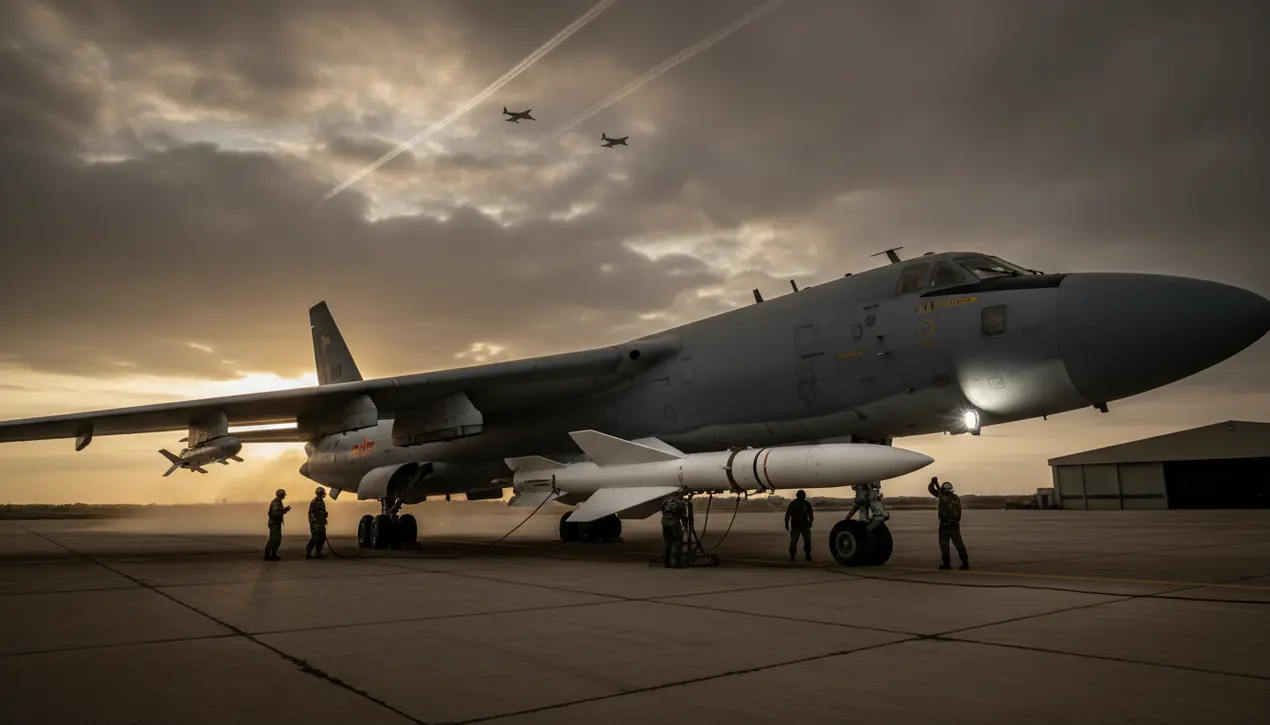
Politicsconflict & defenseMilitary Operations
China's JL-1 Missile Poses Nuclear Threat to the US.
OL
Oliver Scott
1 day ago7 min read1 comments
The recent unveiling of China's Jinglei-1 (JL-1) missile during the Victory Day parade in September represents more than a new piece of military hardware; it is a calculated move in the high-stakes game of nuclear deterrence, one that directly recalibrates the strategic risk calculus for the United States. This nuclear-capable, air-launched ballistic missile, designed to be carried by the upgraded H-6N strategic bombers, is being characterized by analysts as the final piece in China's long-sought nuclear triad—the ability to launch nuclear strikes from land, sea, and air.While its immediate reach may tactically place Alaska and forward-deployed US assets in the Pacific within its crosshairs, the JL-1's true significance lies in its contribution to a broader, more alarming pattern of Chinese strategic modernization. For decades, the US has operated under a presumption of nuclear primacy, but the systematic development of systems like the JL-1, the DF-41 ICBM, and the new Type 096 ballistic missile submarines signals a deliberate and rapid shift away from China's historical posture of minimal deterrence towards one of assured retaliation.This evolution poses a direct challenge to US missile defense architectures, which are primarily designed to counter limited launches from rogue states, not a coordinated, multi-vector attack from a peer adversary. The air-launched nature of the JL-1 introduces a new layer of complexity and ambiguity; unlike fixed silos, a bomber in flight is a mobile, elusive target, complicating pre-emptive counter-force strategies and potentially compressing decision-making timelines during a crisis.However, significant operational limitations remain. The H-6N, a derivative of the aging Soviet Tu-16, lacks the stealth and penetrating capability of American B-2 or B-21 bombers, making it vulnerable to modern air defenses.The missile's reported range would still require the bomber to venture into contested airspace to hold the continental US at risk, a perilous mission profile. This creates a scenario of 'limited reach but escalating tension,' where the weapon's symbolic value in demonstrating technological parity may, in the short term, outweigh its practical battlefield efficacy.The geopolitical ramifications are profound. This development will inevitably fuel debates in Washington over the need for a costly expansion of homeland missile defense, the modernization of the US nuclear arsenal, and the viability of arms control talks with Beijing, which has thus far resisted them.It forces a reassessment of security guarantees to allies in the Indo-Pacific, where the mere presence of such a weapon alters the balance of power. The JL-1 is not an isolated threat but a symptom of a systemic shift towards a multipolar nuclear world, eroding the bipolar stability of the Cold War era and introducing a new, more volatile chapter in great-power competition where miscalculation becomes an increasingly terrifying possibility.
#China
#JL-1 missile
#nuclear threat
#H-6N bomber
#US defense
#featured
Stay Informed. Act Smarter.
Get weekly highlights, major headlines, and expert insights — then put your knowledge to work in our live prediction markets.
Comments
Loading comments...
© 2025 Outpoll Service LTD. All rights reserved.